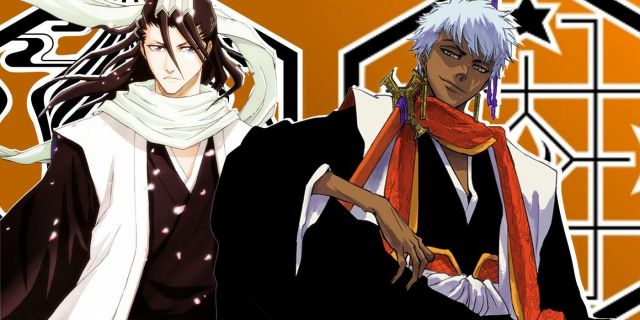Bleach concluded with many mysteries unsolved and plot points that needed more exploration. The Soul Society’s Great Noble Houses are among those story threads, being introduced during the “Soul Society” arc but only touched upon a handful of times afterward. However, the Can’t Fear Your Own World light novel revisited the Noble Houses’ relevance in the story and expanded on much of the lore surrounding the influence they hold over the entire Spirit Realm.
The most notable Great Noble Houses are the Kuchiki, headed by Byakuya Kuchiki, and the Shihōin of which Yūshirō Shihōin is the current head. The fifth Great Noble House, the Shiba Clan, was removed from its standing for unknown reasons; Kūkaku Shiba is the head of this defamed house. Multiple others are lower in the hierarchy, such as the Fēng Family, Kyōraku Family, Kira Family and others, while one Great Noble House remains unnamed. The light novel also introduced the Tsunayashiro Clan. It is headed by Tokinada Tsunayashiro, who serves as the story’s antagonistic force and displays just how powerful and influential the Noble Houses are in Bleach‘s world.
The Roles of the Great Noble Houses in Bleach
The Shihōin House are customarily the leaders of the Onmitsukidō, or Stealth Force, with the Fēng Family serving under them and the Ōmaeda Family generally being members of the 2nd Division. The Kuchiki House has been tasked with maintaining the Soul Society’s history, though this isn’t really given context within the Bleach anime. Aside from these examples, the majority of other Noble Houses serve the purpose traditionally expected of nobility — ensuring the status quo of a class system.
Byakuya commented on this in the “Soul Society” arc, stating that, “Even in the four Great Noble Families who are born with spirit energy surpassing all others, only one in several generations will ever attain that level. The names of those who have achieved it are etched in the history of the Soul Society. That is Bankai.” Whilst these words appear to be retconned later in the series, it is notable that many of the captains and higher-ranking Soul Reapers have connections to nobility. This implies those with noble blood are more likely to reach higher ranks within the Gotei 13 and achieve Bankai, making their position above regular Soul Reapers not only about status but also power.
The Noble Houses are the Real Power in Bleach‘s Soul Society
An interesting development concerning the nobility of Bleach is explored through one of Tokinada’s agendas. He states that the Five Noble Families have the authority to surpass both Central 46 and the Royal Guard when all five houses are united. Part of his plan is to reinstate the Shiba Clan into the fold to ensure the united strength of the Noble Houses and their place as the superior power that rules over the entire Soul Society. The Noble Houses’ importance was never given the screen time it deserved due to the anime’s lack of information.
With the vast number of characters and antagonists Ichigo Kurosaki faces, it makes sense that including yet another group could have been too overwhelming for Bleach‘s mainline plot. Whilst the Soul Reapers are the enemy in the “Soul Society” arc, they quickly shifted to protagonists — but it is the Central 46’s impression as a bureaucratic, corrupt agency that lays the seeds for a possible confrontation with the powers that be. Considering they were below that of the Noble Houses, even doing their bidding, it implies there was further rot in the Soul Society system that couldn’t be examined due to how the series progressed.
Bleach‘s Five Great Noble Houses Made the Worlds
The Can’t Fear Your Own World novel expands somewhat on politics. Tokinada Tsunayashiro assassinates the former head of his family, portraying the nobility structure’s dark nature, but it is the history that makes their power all the more terrifying. Each noble ancestor had separate motivations for using the Soul King’s power to divide the world of the living and the dead. In the end, the Shiba ancestor was unable to sacrifice himself in the first Soul King’s place, which led to the Soul King’s role as the linchpin of the worlds.
This information provided by Ichibē Hyōsube in the light novel paints the original nobility as almost mythological legends who created the world as it is now. Whilst Bleach‘s nobility is barely mentioned in the grander scheme of the anime, the first heads examined in the light novel have a resemblance to the Chinese religion of The Wǔfāng Shàngdì, with five gods all representing a different aspect of the world.
The Soul Society’s internal politics are not a major theme in Bleach, and the majority of the “Soul Society” arc sees Sōsuke Aizen manipulating the orders of Central 46. This means the nobility had little impact during that arc, as they would have had no control over the decisions made by Aizen’s fakes. The reinstating of the real Central 46 is barely addressed, but it can be argued that the group had to be selected by someone. There was surely no one better than those who truly ran the show in the Soul Society: the Noble Houses.










